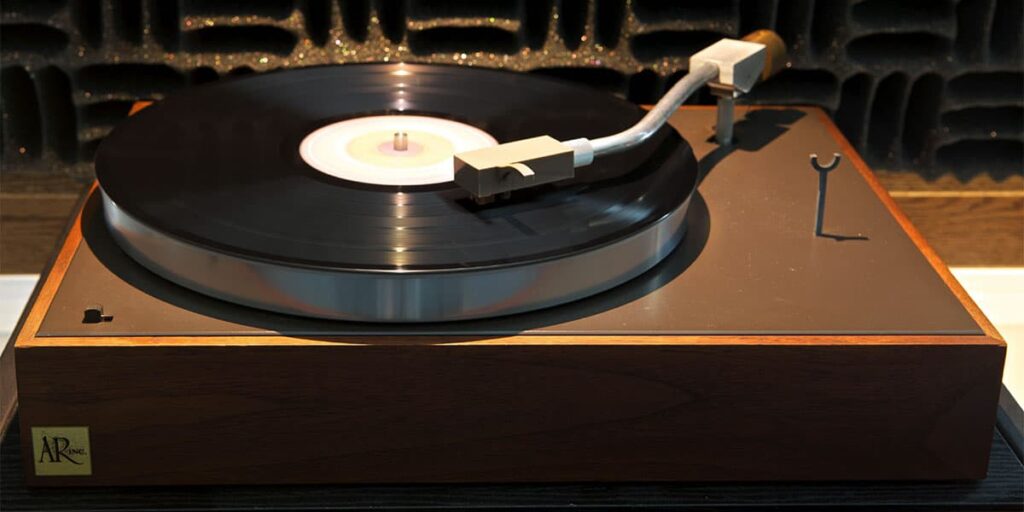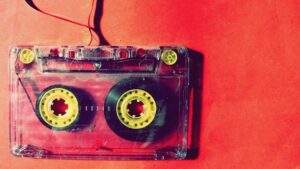A Comparison of Vintage and Modern Turntable Technology
Vinyl records are back big time! Music lovers have rediscovered the warm, richly textured sound that only a high-quality audiophile turntable can provide. With the new popularity of LPs, people are also snatching up turntables to spin those “magical” discs. Now folks have to make a choice: vintage player or modern model? Turntables from the 50s to the 80s have the classic looks and hand-assembled craftsmanship audiophiles and antique enthusiasts love. But new record players boast advanced tech for easier control and convenience.
In this article, we’ll break down the good and bad of both types – old school versus new school. Evaluate the pros and cons of these different models and make an informed decision about what’s right for you.

Vintage Turntables
As I’ve said before, when most people think of vintage turntables, they think of models made from the 1950s to the 1980s. What characterizes these old-school turntables? Firstly, their design stands out: wooden bases, silver metal handles, and mechanical buttons.
Vintage turntables have been carefully hand-assembled by specialists. Mass production in factories was not the norm back then. The companies have chosen high-quality materials such as natural wood, steel, high-quality plastic, and rubber. Materials selected to absorb or amplify vibrations properly. This helped achieve a warmer, more balanced sound.
Precision is another brand of older turntables. Heavy and stable wooden plinths maintained stability while records were played. Belt drives with stroboscopic markers allowed precise control of rotation speed. The expertly weighted tonearms glided smoothly along the record tracks with delicate precision. It is this thoughtful precision that allows for the best results in vinyl recordings.
Few electronics today receive such close attention. This rare combination of quality components, materials, and custom build is what attracts vinyl lovers to the vintage turntable scene today.

Modern Turntables
New models use the latest technology to sound incredible and give users convenience. Many modern record players have digital hooks ups built right in. You can convert vinyl to MP3 files over USB or stream wirelessly over Bluetooth to speakers and headphones. Useful features for listeners today who want flexibility and portability.
Modern turntables also employ advanced materials and construction methods. Plinths and tonearms are now made of high-quality aluminum, acrylic, or composites that are more rigid and dampen vibrations better. Precision computer machining and automated assembly means each component lines up right for optimal sound quality.
The design of new record players is sleek and simple to match contemporary media rooms. Built-in preamps, automatic tonearm movement, and speed buttons add convenience for beginners.
While new turntables may lack the old-fashioned charm of vintage players, they offer leading tech, engineering precision, and user-friendly features that meet the needs of music lovers today.
Sound Quality Comparison
When it comes to sound quality, vintage versus modern turntables offer distinct differences. Vintage turntables are praised for their warm, organic sound created by wood plinths, metal tonearms, and qualitative cartridges. This rich analog character appeals to many audiophiles.
In contrast, modern turntables emphasize clarity, detail, and accuracy. Advanced materials and manufacturing allow for tighter control over resonance and vibration, resulting in a more precise, resolving sound. High-quality modern components can deliver exceptional transparency.
Ultimately, the specific components used significantly influence the sound quality of both vintage and modern setups. A well-designed vintage turntable with top-tier parts can rival many modern options. Conversely, a modern audiophile turntable under $1000 equipped with premium components and audio equipment can reproduce music with breathtaking accuracy, rivaling even esteemed vintage setups.
The choice often comes down to personal preferences. Some prefer the warmth of vintage turntables, while others gravitate towards the precision of modern designs. Auditioning both is the best approach to determine which sound profile resonates most with individual tastes.
Build Quality and Durability Comparison
Comparing vintage vs modern audio turntables’ build quality, you can tell that older turntables were handcrafted with great care and good materials. That’s why many of them still sound amazing decades later. But over time, even such unique products can require repairs.
Instead, new record players use technological advances and materials such as aluminum. Computer-controlled machines mass produce parts with high precision every time. So they lack the charm of old-school craftsmanship but strive for the same longevity (however, this is only true for modern top-tier turntables).
In short, vintage players rely on professional handling and quality materials designed to last. The new players utilize technological breakthroughs in manufacturing to ensure reliable performance over a long period. Both can offer amazing durability but in different ways. Old school fine-tuning versus modern precision engineering.
